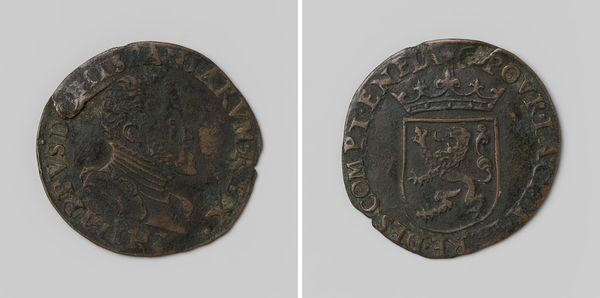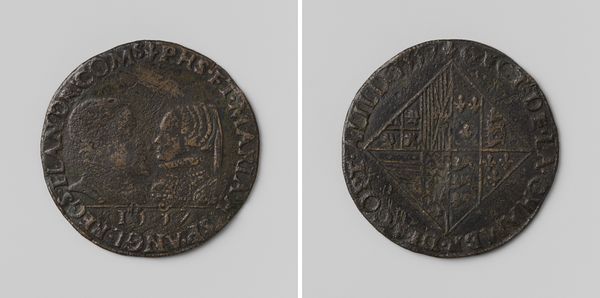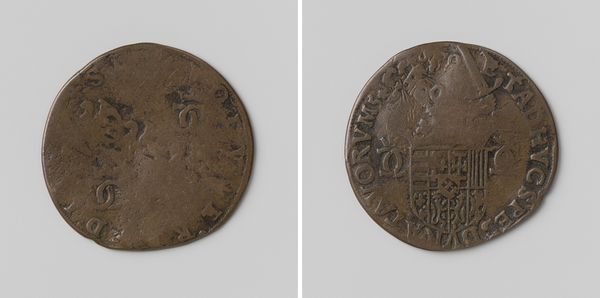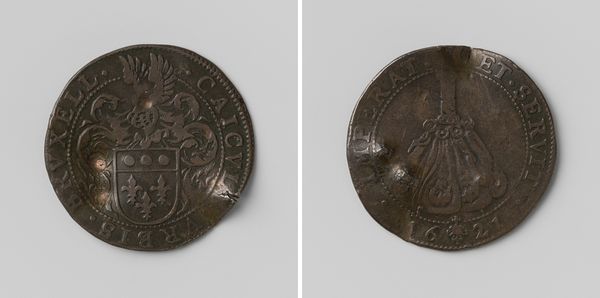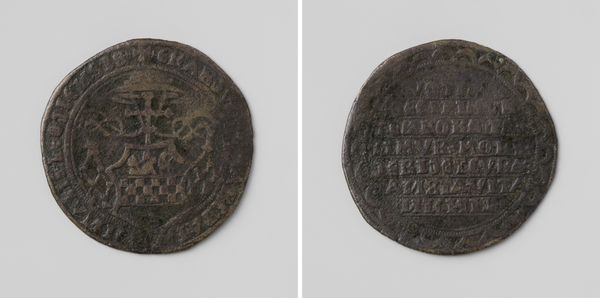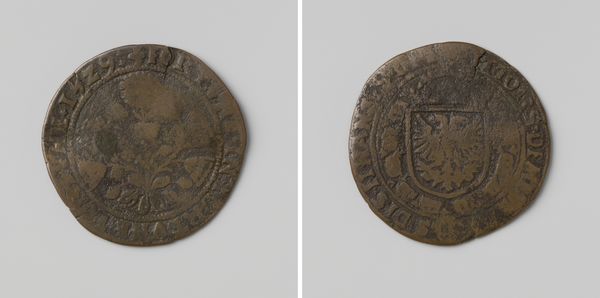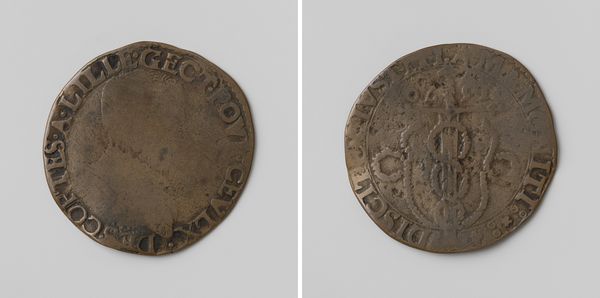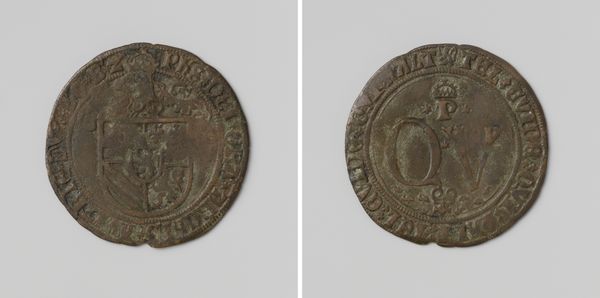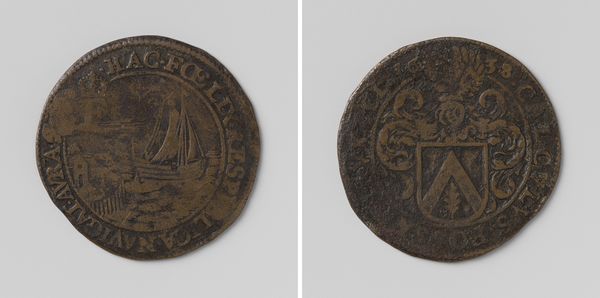
print, metal, engraving
#
portrait
#
baroque
# print
#
metal
#
sculpture
#
coin
#
engraving
Dimensions: diameter 3.1 cm, weight 65 gr
Copyright: Rijks Museum: Open Domain
Curator: What an intriguing little object! Here we have a copper or bronze medal created in 1649, it's titled, "Hieronymus de Maeyer, rentmeester-generaal van de stad Antwerpen". Editor: It gives off an immediate sense of formality, but also civic pride. The detailing, especially around the central images, feels really meticulous. Curator: Precisely. Medals like these weren’t mere decorations; they served a specific purpose within the intricate social and political theater of the era. Notice the coat-of-arms displayed within the floral border on the front side. And underneath, the initials S.P.Q.A., standing for "Senatus Populusque Antverpiensis" – The Senate and People of Antwerp. It speaks to the values and organization of the city at that moment in time. Editor: It makes me think about the social symbolism of exchange and worth. Here’s de Maeyer being celebrated, but what underlying systems of power enabled him, and those represented, to be in such elevated positions? Was wealth creation and land control equitable, even under these ‘benevolent’ administrators? Curator: That's an excellent point to consider, absolutely! Think about the visual vocabulary employed - laurel wreaths borrowed from classical antiquity frame the dedication on the back, invoking concepts of virtue and civic responsibility in the spirit of Baroque classicism. But these symbols don’t exist in a vacuum. Editor: Not at all. They reflect very specific ideas of virtue and responsibility as defined and enforced by the ruling class. A coin might portray idealized values but may obscure the true social dynamics underneath. How did these images circulate, who could afford to obtain them and thus perpetuate this self-idealizing image? Curator: By focusing on the cultural capital embedded within something as small as this medal, it speaks volumes about power structures and idealogical messaging throughout seventeenth-century Antwerp! It also raises an important point - which public, and for which purpose, are we discussing here. Editor: Ultimately, objects like this force us to recognize that representation is never neutral; it's always a negotiation, a constructed image that needs critical examination. The details of even minor artifacts, when explored through the lens of identity and authority, reveal critical realities that are frequently left hidden.
Comments
No comments
Be the first to comment and join the conversation on the ultimate creative platform.

